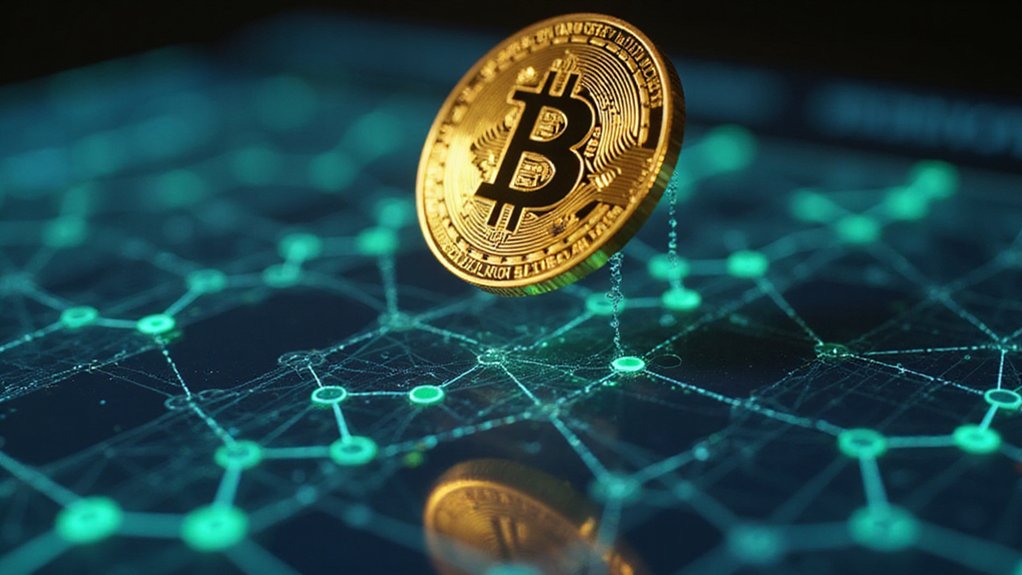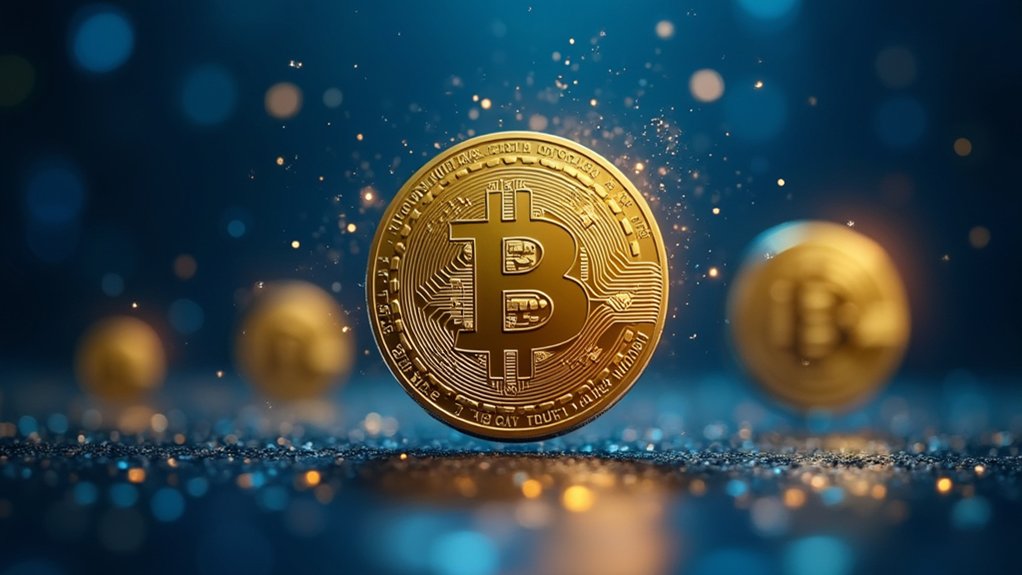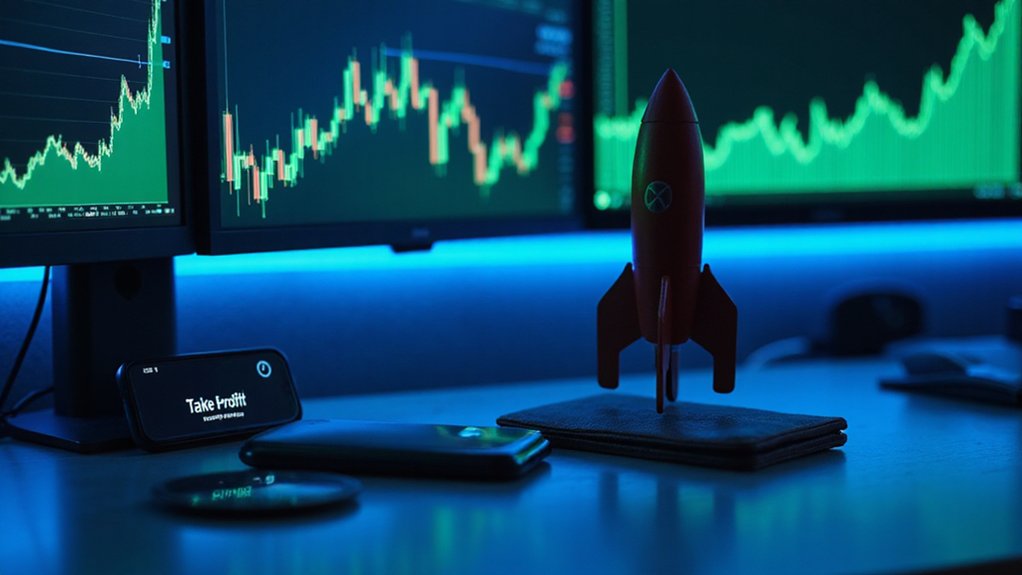Minting is the blockchain-based creation of new cryptocurrency tokens or digital assets, operating through decentralized consensus mechanisms rather than central authority. Unlike energy-intensive mining, modern minting typically employs Proof of Stake protocols, where validators stake existing tokens as collateral to authenticate transactions and receive newly minted tokens as rewards. This process underlies the creation of NFTs, blockchain domains, and other digital assets—establishing verifiable ownership without intermediaries. The technical elegance of this system becomes apparent upon closer examination.

How exactly does digital scarcity transform a string of code into a valuable asset?
The answer lies in minting, the blockchain-based process that creates new cryptocurrency tokens or digital assets through a decentralized mechanism.
Unlike traditional currency production, which requires physical printing presses and central bank authorization, blockchain minting operates within a trustless system governed by code and consensus.
Minting primarily operates through Proof of Stake (PoS) protocols, where participants—known as validators—lock their existing tokens as collateral to gain the right to authenticate transactions and create new blocks.
Validators stake their own tokens as collateral, earning the right to authenticate transactions and create new blocks within the PoS ecosystem.
In return for this service (and risk), validators receive newly minted tokens as rewards.
This stands in stark contrast to the computationally intensive Proof of Work mining, which consumes vast amounts of electricity to solve cryptographic puzzles.¹
The versatility of minting extends beyond cryptocurrency creation.
When applied to digital art and collectibles, minting transforms them into non-fungible tokens (NFTs)—unique, transferable assets with embedded metadata regarding creator information, provenance, and specific attributes.
Once minted, these digital assets receive immutable blockchain verification, establishing incontrovertible ownership records that can be transferred between crypto wallets.
Domain names, too, have entered the minting ecosystem, freeing users from centralized registrars and recurring renewal fees.
These blockchain-based domains enable decentralized websites and simplified cryptocurrency payments, with ownership controlled exclusively by the wallet holder—not a corporate intermediary.
What makes minting particularly revolutionary is its decentralized nature.
No central authority controls token creation; instead, distributed validators authenticate minting activities according to predetermined protocol rules.
This decentralization enhances security and eliminates single points of failure, while smart contracts encode the creation rules and ownership records transparently on the public ledger.
The energy efficiency of minting—particularly compared to mining’s notorious environmental footprint—has made it increasingly attractive for blockchain networks seeking sustainability alongside security and decentralization.
Successful validators are rewarded with both new tokens and transaction fees for their contribution to maintaining the integrity of the blockchain network.
Due to new UK rules, certain pages related to minting technology may be temporarily unavailable in specific regions as regulatory frameworks evolve.
As blockchain adoption accelerates, minting continues to evolve as a cornerstone of digital asset creation.
The minting process fundamentally differs from mining as it doesn’t require solving complex problems but instead relies on staking tokens to secure the network.
Frequently Asked Questions
How Much Does Minting an NFT Cost?
NFT minting costs vary dramatically by blockchain network. On Ethereum, fees typically range from $50-$150 during low congestion but can surge to hundreds during peak times.
Alternative networks like Polygon and ImmutableX offer substantially lower fees.
Strategic minters minimize expenses by batching transactions, operating during off-peak hours, or utilizing “lazy minting” options.
Additional considerations include marketplace listing fees, royalty structures, and metadata storage costs—all factors in the often eyebrow-raising total investment required to bring digital assets on-chain.
Can I Mint NFTS Without Coding Knowledge?
Yes, one can mint NFTs without coding knowledge through various no-code platforms.
Services like Crossmint, NFT-Inator, and Thirdweb have democratized the process with user-friendly interfaces that handle the technical heavy lifting. These platforms allow creators to focus on artistic elements rather than smart contract deployment intricacies.
The accessibility factor (coupled with reduced costs from not hiring developers) has opened the floodgates for non-technical artists to participate in the digital asset economy with remarkable ease.
Which Blockchain Is Best for Minting NFTS?
The “best” blockchain for NFT minting depends on one’s priorities.
Ethereum remains the gold standard—offering unparalleled liquidity and recognition (despite those eye-watering gas fees).
Solana attracts the speed-conscious with its 65,000 TPS capability.
Polygon presents a compelling middle ground—Ethereum compatibility without the financial hemorrhaging.
Flow courts mainstream adoption with user-friendly infrastructure.
The discerning minter might consider whether transaction costs, environmental impact, or marketplace visibility best serves their collection’s long-term value proposition.
How Long Does the Minting Process Typically Take?
¹Previously discussed blockchain options each offer different processing speeds, with layer-2 solutions generally providing faster mint times than Ethereum mainnet.
Can Minted NFTS Be Transferred Between Different Blockchains?
Natively, NFTs cannot simply hop between blockchains after minting—they’re permanently anchored to their original chain’s architecture and standards.
Cross-chain transfers require specialized bridge protocols that lock the original NFT and mint a wrapped version on the destination chain.
While technically feasible, these processes introduce additional security considerations, transaction fees, and trust assumptions.
Alternatively, creators can mint separate versions across multiple chains, though this approach creates distinct tokens rather than transferring the original asset.









